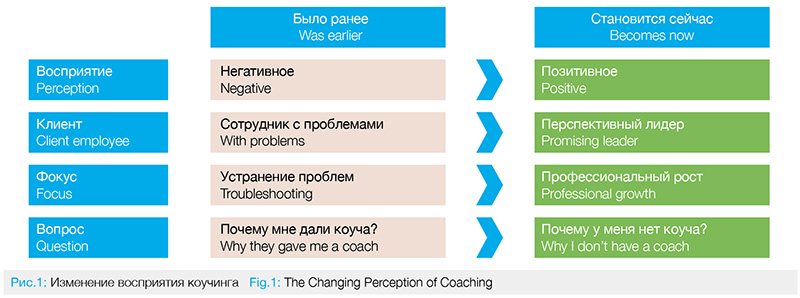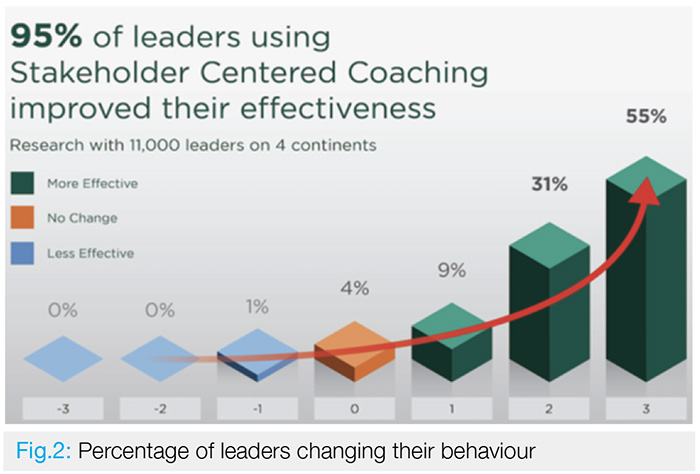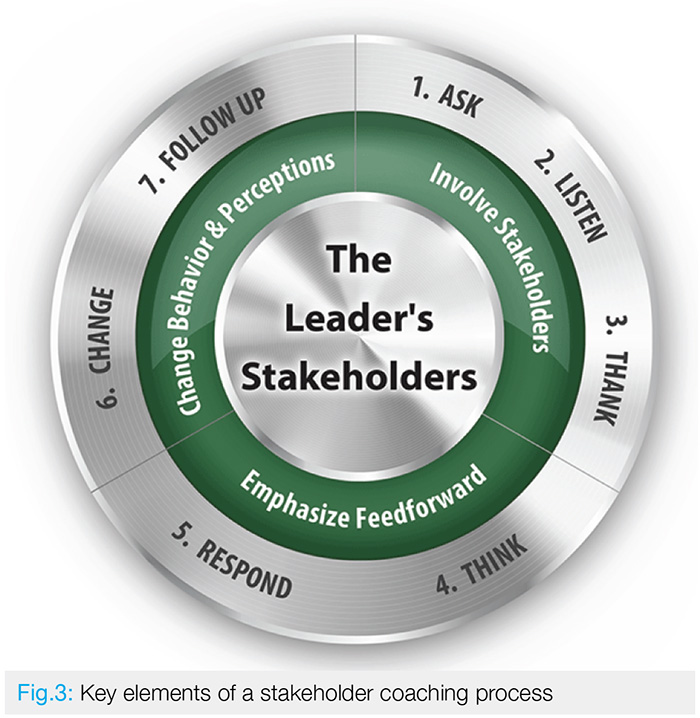The Experience of Utilising Stakeholder Centered Coaching in Russian Oil Companies
Appointment to Leadership Positions
When Russian oil and gas companies appoint employees to positions requiring managerial and leadership skills, as practice shows, these companies rarely provide effective support or training to develop these skills within the promoted individuals.
Often, an employee is promoted due to his technical competencies, without the knowledge and understanding of the specific skills required in leadership roles and tasks. At the same time, the company has an expectation that the employee will be no less successful in their new position.
Both the company and the appointed employees are interested in ensuring the acquisition of the new skills and qualities which are missing for successful leadership, these need to be acquired as quickly as possible. At the same time, the employee must continue to demonstrate those qualities and skills that made him worthy to take a new position, whilst developing their skill and management deficiencies, with the same skill set deficiency being the main reason why they have not been promoted in the past.
The question arises: how to train and develop managers more efficiently? Leadership development coaching is a good tool for this.
The Modern Perceptions of Coaching
The perception of coaching has changed dramatically over the past few decades1. If earlier the presence of a coach by a leader was perceived as a weakness within the leader, them being a “loser”, or as a “person with problems”, the current attitude towards working with a coach, is a sign of a leader’s success. A sign that the organization values its employees, sees the great potential within them, and helps them to quickly adapt and develop as a competent manager and leader. Coaching is increasingly perceived as a positive process, as working with winners, preparing them for new career heights. A number of Western companies even have a requirement for senior executives to have coaches.
1 According to the International Federation of Coaching, coaching is partnering with clients in an intellectual and creative process that inspires them to unleash their personal and professional potential. In a business environment, coaching is designed to assist managers and employees to quickly realize their leadership and managerial potential, to go through the path of appropriate growth.
Evgeny Lapshin
Executive Director of MOL GROUP
for Russia and Kazakhstan❝My first coaching experience happened in 2009-2010 while studying for the Executive MBA program at the Moscow School of Management Skolkovo. An individual coaching module was part of the program. Looking back, I can now say that it was one of the most valuable and useful modules that I took. The dilemma that I dealt with with my coach was to further my career development. Either along the functional line in finance, or with a transition to general management. The decision made of the course of close communication with my coach enabled me to further focus my chosen development path. Since 2011, I have held the position of CEO and I do not regret the choices I made then.
Also, since then, I have repeatedly been in the role of a coach to other people and I have received positive feedback on the benefits this approach has brought to my subordinates. According to my observations, employees who have completed a coaching program always positively change their behavior and increase their necessary competencies.❞
In this setting, coaching support is valuable for both the newly appointed executives and those who have held the position for a long time. This support will allow the former to quickly get used to the new position, identifying the key skills that need to be acquired, as well as develop a strategy for themselves and the unit into the future. The second is to look at their work from the outside, to identify the behaviours that hinder them more than helping them, to correct it in order to either contribute more in their current position, or to prepare for a new position for themselves.
In both cases, leaders gain additional motivation because by providing a resource in the form of a coach, the company sends them a signal of their value. In the long run, they reinforce positive behaviours that are more successful for them and the organization. Communication with a coach also allows managers to exchange views and discuss important issues in a safe environment, and receive frank feedback. That is, they help to overcome the so-called “Leadership Disease”2.
2 Leader’s disease» is an information vacuum created around the manager because employees do not provide him with important (and often unpleasant) information.
The higher the manager is on the corporate ladder, the more severe this “disease” can be, since fewer employees are comfortable giving him feedback, especially pointing out areas for improvement. The consequence of the “illness of the leader” is the adoption of lower quality decisions.
Sergey Pilnik
Director of drilling programs, Department of Oil and Gas Production, “Gazprom Neft” JSC
❝The value of coaching is in the ability to realize your own problems and circumstances, the presence of which hinders development and advancement, by clarifying of the true goals of a person, as well as assisting with the implementations of a development plan.
When it is difficult to admit to yourself that you have not identified within yourself and do not know what to move to make or the direction to proceed in, communication with a coach sometimes leads to solutions that you would never have thought about. And it is remarkably interesting that you can create a plan for solving the issues, although 10 minutes ago you did not know about or could identify them.
But the most valuable thing for me personally is the emergence of tremendous motivation to achieve goals and implement plans. Sometimes simple laziness and external factors («fire fighting», etc.) can interfere with moving towards the assigned tasks, and in these situations the coach imperceptibly, but very firmly, reminds of the true goals that are important for you.❞

Stakeholder-Focused Coaching
A widely practiced approach to leadership development is the Stakeholder Centered Coaching® system, which has been used in various companies and countries by thousands of leaders for over 20 years. This system was developed by renowned leadership expert Marshall Goldsmith3.
Coaching with the involvement of stakeholders is a structured set of sequential actions (system), the observance of which in 95% of cases guarantees the development of the leadership competencies necessary for the leader.
Stakeholder coaching has several differences when compared to traditional executive coaching.

First, it measures the growth of leadership during the process. At the same time, the growth of leadership is confirmed not by the leader himself or by the coach, but by people in the immediate environment of the leader – by persons interested in this, stakeholders involved in the growth process.
The very involvement of stakeholders is the hallmark to this system. The stakeholders are managers, colleagues, subordinates. Their involvement occurs not only during the initial 3604 assessment, but throughout the leadership development process.
3 Marshall Goldsmith is the author of more than 40 books, a professor, he was twice recognized as the most influential thinker in the field of leadership, and three times – the most respected coach of leaders in the world.
4 360 Assessment – A formal assessment of a leader’s management and leadership skills, which is carried out by the leader himself, his supervisors, colleagues and subordinates. The primary goal of the 360 Assessment is to identify areas for leadership development.
Furthermore, during the coaching process, the leader is regularly monitored to assess how they are practicing their chosen development areas. This tracking using daily questionnaire forms reinforces the desired behaviour by making it habitual. This part of the process is extremely important. There is a lot of evidence that people undergoing education and training do not always start to use the knowledge gained, because they are not regularly tracked and monitored.
Finally, in stakeholder coaching, the coach is rewarded at the end of the entire process, provided that his client leader has changed in the desired direction as judged by the stakeholders.
A leader undertaking a stakeholder coaching process is required to demonstrate three qualities: courage, humility, and discipline. Courage – to receive feedback from people in his environment, humility – to accept feedback and start using it for your development. Disciplines – to perform the actions provided by the process throughout its entire course for its development and growth.

Despite the workload and complexity of the process, the manager needs no more than 2% of his time in order to fully comply with it. For many executives, such an investment of their time seems quite acceptable.
The Experience of Using Coaching with the Involvement Of Stakeholders In Russian Oil Companies
As the practice of executive coaching finds its way into more and more Russian oil companies, some companies have tried, with interest, to apply stakeholder coaching to their employees. The results of this work were broadly in line with the results shown by this system in other countries.
Despite some caution about the methodology of coaching with the involvement of stakeholders (“What works in the West will not work for us because of the specifics of our mentality,” some leaders fretted), fears about the inapplicability of the system in Russia did not materialize. According to observations, the main reason for concern was the need for the participants to get out of their comfort zones, to open up and demonstrate to colleagues their imperfections, and the desire to develop these areas. In other words, to demonstrate the courage to get feedback from colleagues, to tell them about the areas for improvement, and to keep them informed of their changes in these areas. Those leaders who showed such courage, at the end of the program, got the desired results for themselves. The principle worked: «There is no development in the comfort zone, there is no comfort in the development zone!» If you want to develop and grow, you should not be afraid to leave your comfort zone.
Maxim Misharin
Executive Director of the Yamal Gas Major Project, Gazpromneft-Razvitie LLC
❝Gazprom Neft invited Marshall Goldsmith to speak. The coaching approach he presented seemed quite interesting to me. I wanted to apply it to myself and to my team members.
Based on the results, I can note that for me and for my colleagues, it led to the planned positive changes. We have become more flexible, open to feedback, improved communication and the quality of our teamwork. In several cases, as a result of coaching, specialists have multiplied their leadership competencies, up to the point that they are recognized as the best in their function in the whole company.
For me personally, it was important to delegate more work to my Deputies. At the end of the program, my employees noted that I began to deal with more executive level work issues, and I trusted more in the expertise of specialists, and I did not engage in micro-management of their roles.
In this process, the role of a coach is especially important, as they keep your focus and direction on the task at hand. Despite any ongoing events and emerging unforeseen circumstances in the project, the coach “keeps on his radar” the selected areas of growth, ensuring step by step progress is made.❞
The areas for their development, which the leaders in the Russian oil companies chose for themselves, generally fell into the list of 20 habits, which M. Goldsmith and his clients most often worked to correct. Separately, it is worth noting that many leaders said that setting clearer goals and receiving good quality feedback.
List of Top 20 Leadership Habits Most Frequently Targeted
1 The desire to win excessively: To be a always be a winner, at any cost, whether it makes sense or not and when it is not even useful
2 Adding excessive value: Overwhelming desire to add your «five cents» in every conversation
3 Making your own assessment: The need to evaluate others and transfer your standards to them
4 Making unnecessary destructive comments: Unnecessary sarcasm and harsh comments that we think help us look witty
5 Start talking with “but”, “however,” “despite”: Excessive use of negative clarifiers, which implicitly conveys to everyone: “I’m right. You are not»
6 Telling everyone how smart I am: Striving to show people that we are cleverer than they think you are
7 Talking When Angry: Using Emotional Impermanence as a Management Tool
8 Negativity, “Let me explain why it won’t work”: Seeking to share our negative thoughts, even when we are not asked
9 Failure to Provide Information: Refusing to share information in order to maintain your advantage over others
10 Failure to Provide Well-Earned Recognition: Failure to celebrate and reward others work
11 Taking Praise You Don’t Deserve: the most irritating way to overestimate your contribution to any success
12 Self-justification: Seeking to present your annoying behavior as a «permanent construct» so that others will forgive for it
13 Cling to the Past: wanting to put blame on people and hold onto events from our past
14 Favoritism: ignoring that we are treating someone unfairly
15 Refusing to express regret: Not taking responsibility for our actions, not admitting that we are wrong, not understanding how our actions affect others
16 Not listening: The most passive-aggressive form of disrespect for colleagues
17 Not Giving Thanks: the most common form of bad manners
18 Punishment of the “messenger”: Inappropriate tendency to attack the innocent who is transmitting information and, as a rule, seeking to help
19 Shifting responsibility: Seeking blame for everyone but yourself
20 Excessive need to “be yourself”: Presenting your weaknesses as strengths simply because they are what they are
Conclusion
The result that executives who have undertaken a coaching program with the involvement of other stakeholders and their companies have said that it is more than just the development of leadership skills. The result go beyond one person, beyond the chosen areas of leadership development, and beyond the time frame of working with a coach. The key elements of this result are:
1. The involvement of the leader and the stakeholders in his development process has an effect on the stakeholders, it develops the leader’s flexibility and openness to change, which also creates a culture of openness and change that might not have existed before.
2. Going through the coaching system opens the leader’s eyes to how you can effectively change behaviors while creating a positive impact on others. For many leaders, this awareness is the first step towards behavioral change. These leaders take the following steps on their own. In general, the system makes them more flexible, open to changes, receptive to the opinions of others. They are starting to increasingly apply a cycle of continuous improvement to themselves.
3. Having felt the positive effect of change at work, many leaders use the skills they have learned outside the company, for example, in the family. This allows positive change to spread to adjacent areas, which brings more harmony and happiness to people’s lives.
Alexander Ryndin
Head of Well Workover Service,
ByTex LLC, MOL GROUP RUS❝The most important result for me when going through the coaching system was the awareness of my focus and how to work on myself. The very fact of contacting a coach was valuable for me, as I never thought that I could use such help. It’s not always simple, sometimes I frankly admit to myself that I’m lazy. But in the coaching process, I was motivated by the realization that both myself and others can see the ongoing changes.
The very process of coaching helped me to see the pieces of the puzzle that will form a complete picture of the abilities and goals, and the way to achieve them. Awareness does not come immediately. A direction is set, a process is launched, and over time, a momentum is gained that can overcome all obstacles in its path.
I became more courageous and to try new things and be more open. As a result, we managed to increase our individual and team performance.❞
List of Literature
M. Goldsmith, What Got You Here Won’t Get You There, 2014. / M. Goldsmith. Jump over
your head.
Coaching with a focus on stakeholders, description of the approach.
https://www.stakeholdercenteredcoaching.com/
Author
Artyom Borisov, Coach and Productivity Consultant, in conjunction with Marshall Goldsmith, World’s # 1 Executive Coach.

